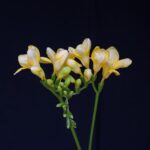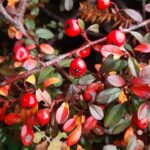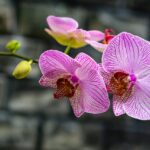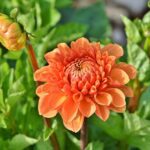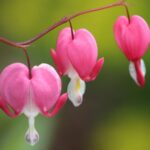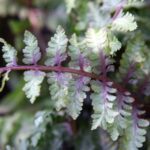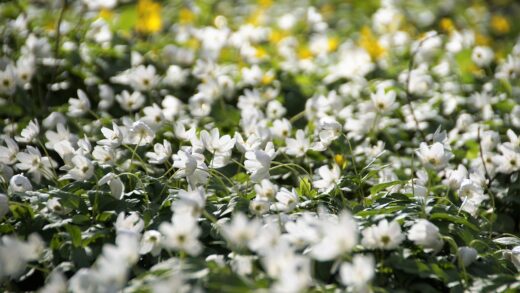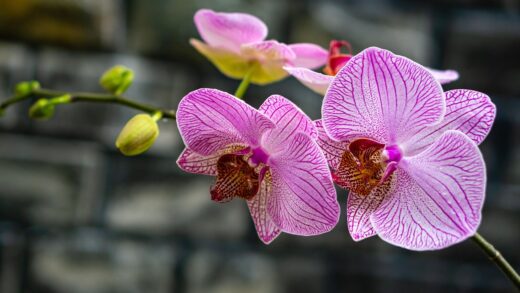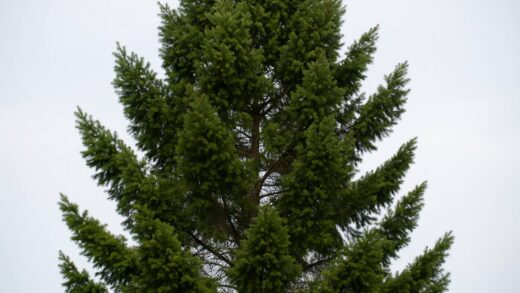The flowering almond, also known as almond bush, is one of the most charming and spectacular ornaments of spring gardens with its lush, double pink flowers. However, to ensure it maintains its best form and blooms profusely year after year, professional and regular pruning is essential. Many are hesitant about this task, yet with the right technique and timing, we not only preserve the plant’s health but also guarantee the next year’s floral splendor. Pruning is a kind of rejuvenating intervention that stimulates the plant to grow new shoots, on which the following spring’s flowers will develop. The key to this intervention is understanding why and how we make the cuts in alignment with the plant’s life cycle.
The primary goal of pruning is to encourage continuous renewal, as the flowering almond produces its flowers on the previous year’s shoots. It follows that by pruning, we prompt the plant to develop as many new, strong canes as possible during the remainder of the growing season. These fresh shoots mature over the summer and autumn, and it is on them that the buds, from which the next spring’s flowers will emerge, will differentiate. Without pruning, the shrub becomes leggy, the number of flowers decreases, and the plant’s habit takes on an aged, untidy appearance. Therefore, professional cutting back is a direct investment in the richness of the following year’s bloom.
Correct timing is critically important for the flowering almond, and this is where most gardeners make mistakes. Pruning must always be done immediately after flowering, as soon as the last petals have fallen. This usually occurs in late spring or early summer. If we wait too long and postpone pruning until mid- or late summer, we shorten the period during which the plant needs to grow new, flower-bearing shoots. The most fatal mistake is pruning in winter or early spring, as this removes all the buds ready to bloom, and the plant will not flower that year.
In addition to maximizing flowering potential, pruning also plays an important phytosanitary role. The flowering almond is susceptible to Monilinia blight, which causes flowers and shoots to die back. During pruning, we remove diseased, damaged, or dried parts, preventing the spread of pathogens. Furthermore, by thinning the crown, we improve air circulation within the plant, which reduces humidity among the leaves, thus creating less favorable conditions for fungal infections. A well-maintained, airy crown is much more resistant to diseases.
Necessary tools and preparations
For professional pruning, the use of appropriate quality and condition tools is essential. The most important tool is a pair of sharp secateurs, with which we can remove the thinner, one-year-old shoots. For thicker, multi-year branches, a pair of loppers will be needed, which allows for greater force due to their longer handles. For removing the oldest, thickest branches, especially during the rejuvenation of shrub-form plants, a hand saw, such as a Japanese saw, may be the best choice. A fundamental requirement is that the blade of every tool is clean and razor-sharp because dull tools crush the plant tissues, which hinders wound healing and opens the way for pathogens.
More articles on this topic
The cleanliness and disinfection of tools are crucial in preventing the spread of plant diseases, especially Monilinia. Before starting work, and particularly when moving from one plant to another, the cutting surfaces of the tools must be thoroughly disinfected. Pharmacy-grade alcohol, a bleach solution (in a ratio of one part bleach to nine parts water), or special horticultural disinfectants are perfectly suitable for this purpose. If a clearly diseased branch has been removed, repeat the disinfection before the next cut to avoid transferring the infection to healthy parts of the plant.
Personal safety should not be forgotten during pruning. A good quality, strong pair of gardening gloves will protect your hands from scratches, blisters, and plant saps. When working overhead or cutting in a dense branch structure, the use of safety glasses is also recommended to protect your eyes from snapping branches or falling debris. Always ensure you have a stable footing and do not stretch dangerously for hard-to-reach branches; instead, use an appropriately sized ladder.
Before making the first cut, take a few minutes to thoroughly inspect the plant. Step back a few meters and observe the entire shape and structure of the flowering almond. Look for dead, diseased, damaged, or crossing, rubbing branches, as these should be removed first, regardless of whether the plant is a standard or shrub form. This initial assessment helps in planning the subsequent cuts and in creating the desired, harmonious, and airy crown shape. Pruning without a plan, impulsively, can easily result in a disproportionate and overly thinned plant.
Pruning techniques for standard and shrub forms
Pruning a standard flowering almond, which is grafted onto a tall stem, is a radical but necessary intervention aimed at maintaining a compact, spherical, or semi-spherical crown. After flowering, all the bloomed shoots must be cut back hard. The correct technique is to shorten each shoot that has borne flowers right back to its base, leaving only 2-3 buds, which means about a 5-10 centimeter stub. This seemingly drastic cutback stimulates the plant to grow a large number of new, vigorous shoots from the remaining buds during the summer, which will then be covered in flowers along their entire length the following year.
More articles on this topic
An essential part of pruning the standard form is the removal of any suckers appearing on the trunk or from the rootstock area below the graft union. These shoots emerge from the rootstock, the plant providing the root system and trunk, not from the noble crown. If these are not removed regularly, the plant can revert, and the suckers will drain energy from the grafted crown, to the detriment of flowering. Suckers should always be cut off as close to the trunk as possible, right at their base, not just pinched back. This operation can be performed at any time of the year, as soon as these unwanted shoots are noticed.
Pruning the more natural-looking shrub flowering almond requires a different approach; here, the goal is continuous rejuvenation and the creation of an airy structure. Pruning should begin by removing one-third of the oldest, thickest, and most senescent branches completely from the base. Cut these near the ground level with a saw, making way for new, young shoots to emerge from below. This thinning cut prevents the center of the shrub from becoming bare and ensures that the plant always has a healthy balance of different-aged canes, resulting in even flowering.
Once the shrub has been thinned, the remaining younger, post-flowering shoots need to be cut back. These shoots do not need to be pruned as drastically as those on the standard form. As a general rule, remove about half to two-thirds of their length, cutting to an outward-facing bud. This cut encourages branching and the development of a denser, yet still airy, branch system. Furthermore, remove any weak, thin, inward-growing, or crossing branches so that light and air can reach all parts of the shrub unimpeded.
Post-pruning care and avoiding common mistakes
After pruning, the plant needs extra support for rapid regeneration and to kick-start intensive shoot growth. Water the base of the flowering almond thoroughly after the intervention, especially if the weather is dry and warm. An application of a balanced, slow-release fertilizer or a layer of mature compost spread around the base will provide the necessary macro- and micronutrients for the vigorous development of new shoots. This aftercare helps the plant recover from the stress of pruning and gather energy for the next year’s abundant bloom.
The treatment of larger pruning wounds is often a subject of debate among gardeners. According to the modern view, for most clean cuts made with sharp tools, the use of wound sealants is unnecessary, as the plant’s own defense mechanisms are sufficient to close the wound. However, for extremely large wounds made with a saw, exceeding 3-4 centimeters in diameter, it may be advisable to apply a thin layer of pruning paint or wound wax. This can prevent the entry of wood-boring insects and reduce the chance of certain pathogens establishing, although the most important protection is always a clean cut and good air circulation.
One of the most common and most disappointing mistakes is incorrect timing. Never prune a flowering almond in the autumn, winter, or early spring before it flowers, as this will remove all the flower buds, leaving the plant bare for that year. An equally serious mistake is waiting too long after flowering. If pruning is carried out only in mid- or late summer, the plant will not have enough time to produce sufficiently strong and mature new shoots that will flower by the end of the season. The rule is simple: the time for pruning is within one to two weeks after flowering ends.
The other common mistake is excessive caution, or pruning too timidly. Many gardeners are afraid to cut the plant back hard enough, especially the standard form, fearing they will harm it. This results in a weak, leggy, and bare branch system, on which the flowers become smaller and sparser, and the crown loses its compact shape. It is important to understand that the flowering almond tolerates and indeed requires strong pruning. The plant will reward brave, professional pruning every year with vigorous growth and a breathtakingly lush display of flowers.







